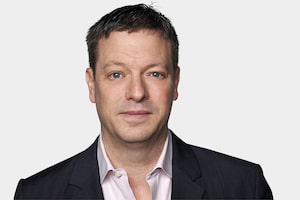When Western governments gathered in London this week to find a way to pay for the reconstruction of Ukraine – amid an international estimate that simply replacing infrastructure and buildings will cost at least US$411-billion – two ominous historical questions hovered over them.
First is the realization this year that Ukraine will need to be rebuilt – physically and economically – while the Russian invasion is still taking place. As Moscow’s seizure of Ukrainian territory enters its ninth year, as millions of Ukrainian refugees wait in Europe for a safe place to return, it’s become clear that recovery can’t wait for a perfect peace. Like South Korea today and West Germany before, Ukraine will have to become a functioning country before it is fully whole again.
It might be possible to get Russia to pay for reconstruction before the war is over: Last week also saw a proposal, coming from a group of Canadians at the World Refugee & Migration Council, to transfer the Russian bank assets frozen under international sanctions into a special fund to pay for the reconstruction of Ukraine.
That leads to the second question: How to get around the fact that reconstruction funds usually fail. The United States has spent more than US$170-billion rebuilding Iraq and Afghanistan – more than it spent rebuilding Europe in the 1950s – to little lasting effect. The recent history of postwar reconstruction is uninspiring. And Ukraine’s postindependence economic performance was never great; it had only begun to overcome deeply ingrained problems of corruption in 2014, when Russia invaded.
As a consequence, many are now calling for something more than a simple reconstruction. The pledge by European Union countries this week to devote €50-billion to Ukraine between 2024 and 2027 (plus a potential €100-million in loans) has been described as “Europe’s new Marshall Plan” – a reference to the 1948 U.S. programme to rebuild the economy of war-devastated Europe, one of history’s few unambiguously successful war-reconstruction efforts.
Does Ukraine need an all-out Marshall Plan? And what would one look like?
A few weeks ago, I found myself sitting at a 1950s-era kitchen table in Virginia, at the historic home of General George C. Marshall, who as U.S. secretary of state devised the eponymous fund, formally known as the European Recovery Plan. I was there, with a small circle of much more informed and experienced people, to discuss the prospect of a Marshall Plan for Ukraine. (The discussion was arranged by the Robert Bosch Foundation, a German institute I’m affiliated with).
“What made the Marshall Plan different was not the money,” said Daniel Hamilton, who has served as a State Department official responsible for Europe and as a Marshall Fund scholar. Mr. Hamilton was the U.S. co-ordinator for the stabilization of the former Yugoslavia following the wars in Bosnia and Kosovo, responsible for answering calls for a “new Marshall Plan” for the region, which, he said, usually just mean “show us the money.”
In fact, the Marshall Plan reduced the amount the U.S. was spending. Between 1945 and 1948, Washington spent US$15-billion on aid to impoverished Europe, without having much economic effect. During its four years of full operation, the Marshall Plan disbursed only US$13-billion (or about US$150-billion today).
“The reason it succeeded had less to do with the money and more to do with the plan – the [European] countries were expected to design one.” Britain, the largest recipient of Marshall aid, used it to nationalize key industries and infrastructure, to the chagrin of the Americans. But they allowed it. The grants did come with conditions – recipient countries were expected not to allow communist parties into their governing coalitions, and were expected to match each dollar spent with an equivalent amount of their own currency through “counterpart funds.”
The plan worked because it included two other important features. It effectively guaranteed Western Europe’s security from invasion. And, perhaps most significantly, it created a set of continentwide trade and payments mechanisms, such as the European Payments Union. It made imports and exports possible again, creating what the French call the “30 glorious years” of economic growth, and evolved into what is now the European Union. “This forced Europeans to work together in ways that for some, so soon after the war, were difficult,” Mr. Hamilton said.
On this front at least, Ukraine is at an advantage. Those mechanisms are already prepared. After all, the 2014 revolution that provoked Russia’s invasion was over the overwhelming Ukrainian desire to be part of the EU and its economic bodies rather than the Russian bloc. Brussels finally responded this year by putting Ukraine on the membership path.
So what Ukraine needs is not a Marshall Plan – the crucial aspects of one are already in its hands. It needs a chance, as it fights its way back to normalcy, to become a fully functioning and connected European economy at last.
 Doug Saunders
Doug Saunders